High Peaks Pure Earth presents an English translation of a blogpost by Woeser, originally written for the Mandarin service of Radio Free Asia on October 19, 2020 and published on her blog on the same day.
The post was prompted by Chinese contemporary artist Zhang Huan’s art installations that took place in Tibet near Mount Kailash a few months ago. The art installations were met with opposition by Woeser and Tibetan artist Kuang Laowu who voiced his concerns on WeChat and Weibo. In the past, Woeser has written about the restrictions on Tibetans who wish to go to Mount Kailash on pilgrimage.
Please note this is the first of a two part essay, we will post the second part next week.
“Our Sacred Land, Their Rubbish Dump (Part 1): Chinese Artist Zhang Huan’s ‘Land Art’ Installation on Mount Kailash” By Woeser
- This incident was first discovered by the Tibetan artist Kuang Laowu. Yes, I am calling this an “incident” and not a beautiful artistic performance. To put it quite bluntly, this is an atrocious act of inflicting damage upon the natural environment and spiritual land of Tibet in the name of art.
On October 8, Kuang Laowu posted on his WeChat and Weibo: “I strongly oppose the ‘land art’ installation by Zhang Huan on sacred Mount Kailash.” He quoted the news report by the art portal “artnet,” which stated that Zhang Huan “just completed two months of work in Tibet” and that in the following month, a “brand new project” would be initiated at Mount Kailash. This new project entails “one million prayer flags made out of newly developed biodegradable plant fibre composites that will integrate into the soil and become dust upon completion of the exhibition.”
Worried that these “one million prayer flags” made from this new material would inflict damage upon the mountain environment, Kuang Laowu contacted “artnet” to raise his concerns but never received any reply. He also sent private Weibo messages to the “Tibetan Ecological Environmental Protection Bureau” and the “Ngari Environmental Protection Office” to inquire whether this massive project had been subject to an environmental impact assessment, but never received any reply.
Kuang Laowu wrote: “Mount Kailash’s environment is likely to be seriously polluted next month under the smokescreen of ‘advanced technology,’ in the name of ‘biodegradable plant fiber composites’ and based on the promise of being ‘very environmentally friendly.’” “The notion of being ‘very environmentally friendly’ is merely wishful thinking and not very realistic. The plateau environment is already very vulnerable (to make it very clear: it is hardly possible for any kind of fabric that is left on Mount Chomolunga to degrade within the next one hundred years). I strongly oppose this ‘land art’ installation on the sacred mountain, because whenever humans interfere with nature on such a large scale, a certain degree of damage and loss is inevitable.
I was grabbed by this news.

- Mount Kailash is not an ordinary site and its significance goes far beyond its geographical meaning; in Buddhism it is praised as the “spiritual pole.” It is situated within Purang County and Ngari Prefecture and, according to traditional Tibetan geography, it is the “the place that engulfs Ngari”; at an elevation of 6656 metres above sea level, it is also the main peak of the Gang Tisé mountain range. The Tibetan for Mount Kailash is Gang Rinpoche གངས་རིན་པོ་ཆེ and means treasure of the snow mountain. Mount Kailash (sanskrit) was considered the heaven of Shiva and the centre of the world. Thousands of years ago, it was the common sacred land of Tibetan Buddhism, Hinduism and Jainism: It was the birthplace of the Bon religion, the home of the Cakrasamvara in Tibetan Buddhism, the abode of Shiva in Hinduism and the place where the founder of Jainism attained immortality. In a nutshell, it is a place where numerous deities reside and which various different religions regard as their sacred land.
In early July 2002, I went on a pilgrimage around Mount Kailash; it took me around 18 hours to walk the more than 50 kilometres-long path leading around the mountain. The moment when the mountain shape suddenly revealed itself to me was like an embodiment of the Buddhist symbol mandara, a pure and clean beauty that cannot be described by words, it was one of those rare feelings of deep appreciation. Traditionally, Tibetans would promise to circumambulate the mountain three times. But I am hardly able to fulfill this promise; like most other Tibetans, I am restricted by the obstacles put in place by the local Chinese government.
Six years ago, I wrote the essay “Local authorities Limit the Issuing of ‘Border Permits’, Prohibit Tibetans to go on Pilgrimage to the Sacred Mountain” in which I recounted how being denied a so-called “border permit,” Tibetans were not able to get through the over ten inspection points along the road and thus their dreams of circumambulating the sacred mountain remained unfulfilled. But this did not apply to Chinese tourists who were not affected by the restrictions and did not suffer from the “unwritten rules” that prohibited them from walking around the mountain. They were able to easily get a “border permit” and could go wherever they wanted. I went with two friends, one from Beijing and one from Suzhou, who had no problems getting to the mountain, while all that I could do was to give them the two rosaries that I had taken and asked them to take them on their journey for me.
- Who is Zhang Huan? He is a 55-year-old Chinese male. A contemporary Chinese artist with an international reputation. It is claimed that he is a “devout Buddhist.” He himself stresses how much he loves Tibet and also that he was Tibetan in his previous life and that in this life he is the only “Han Chinese Sky Burial Master;” “a DNA test revealed that he is 8% Tibetan,” “Tibet is his mysterious garden” and so on and so forth.
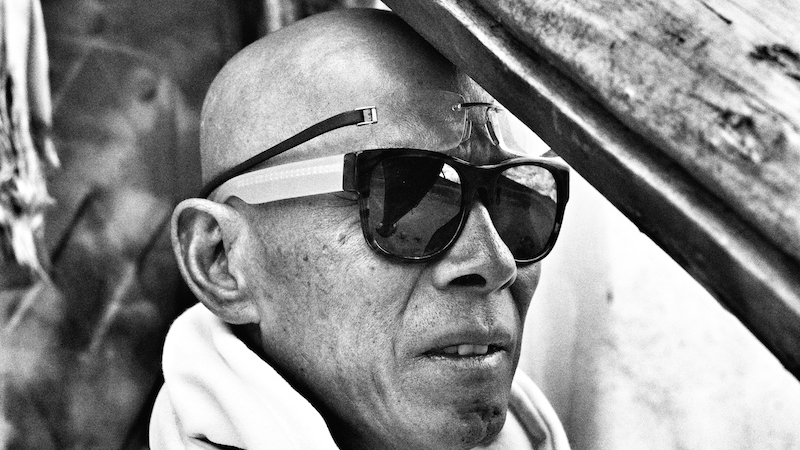
Let’s not talk about what he has done in the past; I am really too lazy to check up on him online. From his Weibo posts, images and videos, it becomes evident that from mid-July until late August this year, with the support of Dior, LV and other international brands, he and his team drove a fancy car with a five-starred red flag “embarking on a creative journey from Lhasa along the new Tibetan route westwards all the way to the Indian-Chinese border.” In fact, he created a massive installation on Mount Kailash as part of what he calls his “‘Noah’s Ark’ mission” to create a “star of the maternal universe.”
First of all, “Noah’s Ark” is a Christian idea, which is entirely irrelevant to Tibetan Buddhism, Hinduism or other religions related to Mount Kailash. Moreover, the “star of the maternal universe” makes one immediately think of the North Korean “universe general,” the dictator Kim Jung-un. Simply from its appearance, this massive spheroid installation consists of a metal frame with a diameter of 20 metres, wrapped in white unknown materials like plastic and fabric; the long stripes make it look like the new Coronavirus, especially when viewed from above.
In the video titled “Gang Rinpoche’s Childhood,” a sad looking horse appears on which Zhang Huan rides along, dressed in white clothes provided by the French brand Dior; he then dismounts to chase a herd of docile and flustered sheep, moving them towards the big Coronavirus-like spheroid. In the background, we see the unique mountain shape of the sacred Mount Kailash. The spheroid rolls around in the wind, revealing the small wheels installed underneath it. Zhang Huan rushes around like a hungry wolf, breathing heavily, suddenly grabbing a lamb that immediately tries hard to free itself. The spheroid’s interior is partially burnt and black; Zhang Huan goes inside and lies down. Can it possibly be a hot air balloon? From the video, we do not see it flying, but torn in a mess, it rolls back and forth on the grass. Finally, this rotten “Noah’s Ark” rolls into the middle of the lake and slowly sinks. Meanwhile, Zhang Huan stands on top of the racks and frames scattered next to the lake, posing for a photo. I don’t know which one of Mount Kailash’s lake this is and I also don’t know if this “Noah’s Ark” is still soaking in it. The local environmental bureau should really go and investigate; if this is not considered pollution, what is?!
This piece about Mount Kailash’s childhood uses pretentious and pompous language, highlighting the hypocrisy and arrogance of atheists; it does not at all cherish the scenes of the wilderness, waters and creatures of the sacred land as shown in the video; it is just like Edward W. Said wrote: “Imperialism…is an act of geographical violence.”

- There is a big five-starred red flag on Zhang Huan’s luxury car, fluttering in the wind of the plateau; it reveals the intentions of the flag holder, it is the nation’s determination to plant the symbol of power along the entire way. Zhang Huan’s “Journey to the West” or what he calls his “creative journey” is better off being called Dior’s advertisement journey. The video “Dior crosses the Qinghai-Tibetan Plateau” shows Zhang Huan putting up Dior fashion on a broken wall and hanging up a big Dior banner. Which architecture does this broken wall belong to? And why is it broken? Zhang Huan obviously does not care about it, instead he excitedly shouts out: “In old Tingri, in old Tingri at the foot of Mt. Chomolungma, we have found an ancient city!”
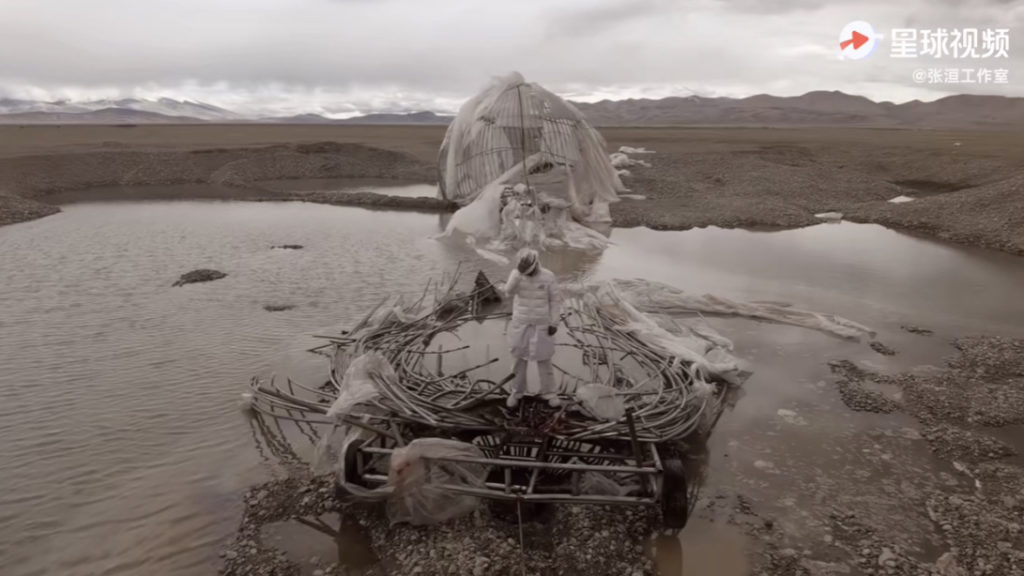
Zhang Huan who claims to love Tibetan religious culture is actually utterly ignorant of Tibetan history and its current reality! What does he mean by “ancient city?” In Tibetan history, the only formal and stable architecture was either government buildings, like Potala Palace or Shigatse Palace, located on mountain tops or religious monasteries and Buddhist halls located on vast and open or secluded spaces. The dilapidated wall parts seen in the video quite possibly belonged to a once splendid monastery. But then how did this monastery become a ruin?
In fact, it is not a long time ago that many of Tibet’s monasteries became ruins, it is certainly not “ancient;” it mostly happened after the 1950s, namely when the power whose flag Zhang Huan in his Dior garments was holding “liberated” Tibet and instigated a series of revolutions. As someone who has extensively written about and researched the Cultural Revolution in Tibet, I have the right to say something on this topic. From a report compiled by the local authorities I found out that in 1976, after the end of the Cultural Revolution, of the originally 2713 monasteries in Tibet, only eight were left; what this in turn means is that a total of 2705 monasteries–treasure-houses of culture–were destroyed by the PLA’s artillery or by the Red Guard’s hoes; many precious objects, such as Buddhist statues, paintings and tools, also disappeared. We don’t know where they are or into which personal pockets they went.

This place where Zhang Huan performed his show in the so-called “aftermath of the pandemic” is of particular religious and cultural importance, representing an accumulation of traditions, making it famous not merely for its mountain peak. Tingri has, in the history of Tibet, produced many outstanding persons, with many influential monasteries of all religious schools being built here. But they were all destroyed during the “pacification of the rebellion” in 1959 and during the “Cultural Revolution” in 1966. Even though in the 1980s, over 40 monasteries were rebuilt, their scale was nowhere near as impressive as before and many remain in scattered ruins. For example, Tingri’s famous Shelkar Chode Monastery is still half in ruins today.
What is even more laughable is that in order to render this “as a place where eastern and western fashion cultures meet,” Zhang Huan not only calls it an “ancient city,” he even makes up the fact that this broken wall is a “century old independent beacon tower.” This is ignorant and arrogant beyond words! In fact, Zhang Huan who always boasts about “being loyal to freedom” knows nothing and does not care about Tibetan history or its tough present situation and suffering. He just consumes Tibet, nothing else. His identity is a combination of a global brand and an authoritarian country; in the video, he giggles frivolously, climbing around the ruins as if he wanted to push over the very last remains of history. Disgusting and scary!
Part Two of this essay will be published separately.

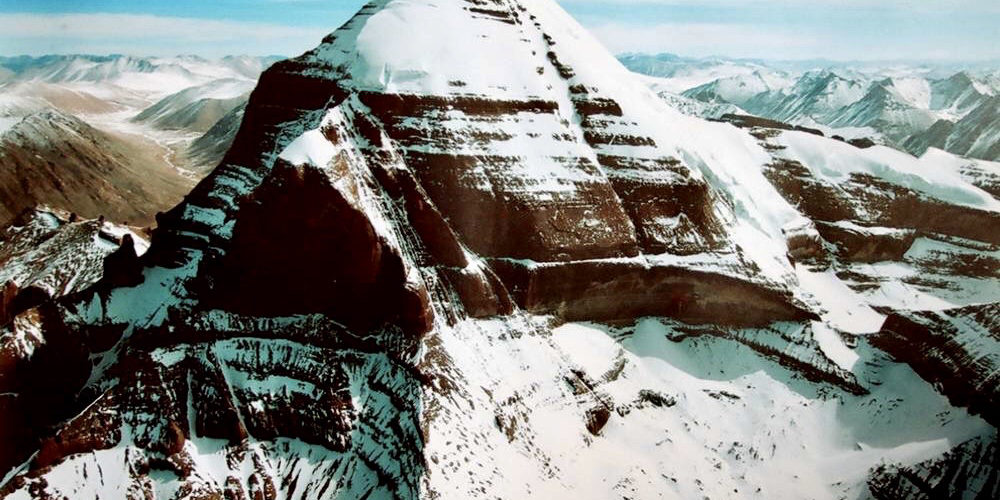

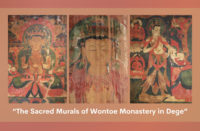
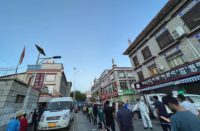
Follow Us!